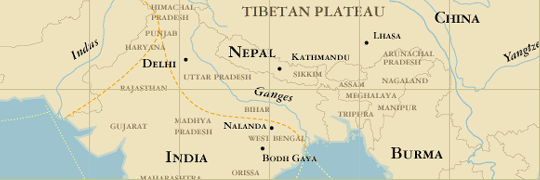|
|
|




  
Even with its formidable physical barriers, the Himalayan region was never completely isolated from the rest of the world. Through high passes and steep, narrow pathways many cultural migrations have taken place, and trade routes, established in prehistory, have coursed with Tibetan products such as musk, wool, yak tails, and salt sold south to India, and gold, spices, perfumes, and precious textiles sent northward. Later, foundational Buddhism, Mahayana Buddhism, and Vajrayana Buddhism traveled along these same roads, and monasteries built near them offered food and shelter in addition to spiritual succor to those passing through, who, in turn, kept the monasteries' coffers full. Pilgrims, monks, and missionaries usually traveled with merchant caravans for safety, although at some points they could take shorter, more dangerous routes that were too difficult for heavily loaded animals. Buddhist travelers often carried portable shrines with them and either brought from home or purchased en route paintings, bronzes, manuscripts, or votive plaques. These devotional goods of pious merchants, pilgrims, and monks played a part in the wide dispersion of Buddhist art styles and iconography, as did the mobility of artists, who also traveled along the trade routes to patrons in distant monasteries or cities.
Next
|
|
